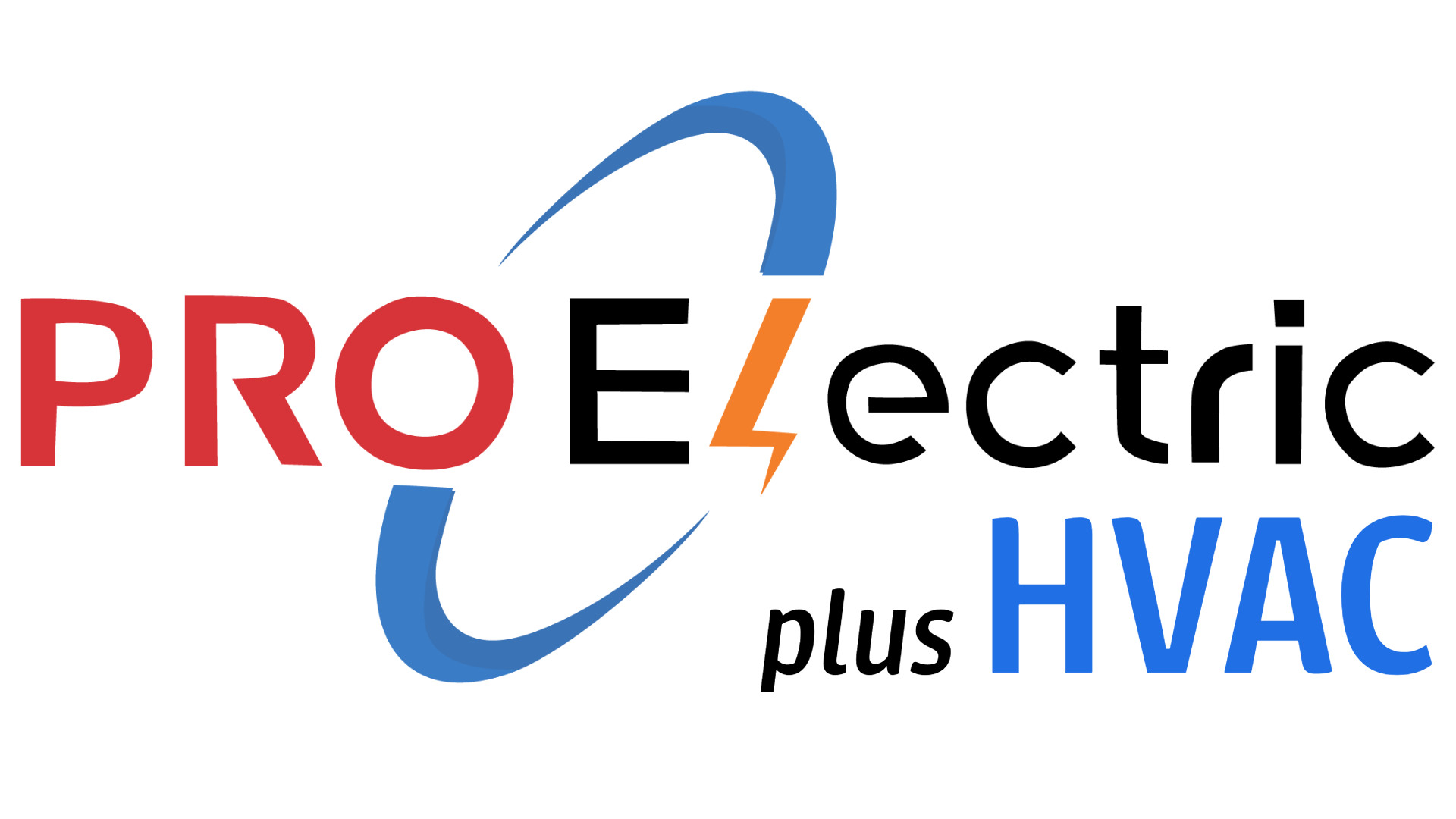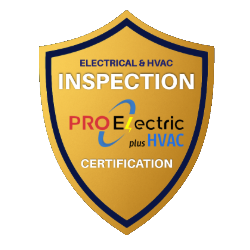Why Residential AC Systems Fail in Summer and Most Common Replacement Parts
Hi, I’m Peter – a Master Electrician and HVAC Technician at PRO Electric plus HVAC.
When summer hits hard, my phone starts ringing off the hook.
Homeowners call me frantically because their A/C quit on the hottest day of the year.
Why does this always seem to happen during a heatwave?
Let’s chat about it in plain English.
I’ll explain what parts of a residential air conditioner or heat pump tend to bite the dust in extreme heat, and how you can spot trouble early or even prevent a breakdown.
Grab a cold drink and let’s dive in!
Summer Heat Puts Extra Stress on Your AC
When it’s blisteringly hot outside, your air conditioning system has to work overtime. Think of your AC like a marathon runner – in moderate weather it can jog along fine, but when the temperature soars above 95–100°F, it’s sprinting without rest. The hotter it is outdoors, the harder it is for the system to dump heat outside, so everything runs longer and hotter than usual.
This increased strain leads to higher energy use and more wear-and-tear on every component. Parts that were “okay” under normal load may overheat or fail when pushed to the limit during a heatwave. In some cases the unit might even overheat and shut itself down as a safety measure, or unfortunately, suffer permanent damage if a critical part gives out.
Keep in mind that high outdoor humidity can add to the stress too. Humidity means your AC has to remove more moisture, which can cause condensation drainage issues or even make the indoor coil ice up if things aren’t optimal.
(Yes, ironically a coil can freeze even in 100°F weather if airflow or refrigerant is insufficient – I’ve seen it happen!) Bottom line: extreme heat is a double whammy for your AC – everything runs hotter, longer, and any weak link is more likely to snap under pressure.
Common AC Parts That Fail in Hot Weather
Over my years in the field, I’ve noticed a pattern: a handful of usual suspects are responsible for most summer A/C failures. Let’s break down the most frequent parts that break or burn out when it’s hot, and why:
- Capacitors: These small cylindrical components provide a jolt of electricity to start your AC’s compressor and fan motors. Capacitors are notorious for failing in summer, and for good reason – they hate heat. Excessive heat or constant hard usage can make a capacitor swell, leak oil, or burn out. In fact, the capacitor is the most common part to replace in an AC unit. They also have a limited lifespan by design, so you might replace a capacitor a few times over the life of your AC. When a capacitor goes bad, one of the telltale signs is the AC humming but not actually starting the compressor or fan. You might hear an odd buzzing noise from the outdoor unit and notice the fan isn’t spinning, or the system may struggle to start (“hard starting”) and shut off shortly after. If the capacitor is completely shot, you’ll get nothing but silence when the thermostat calls for cooling. This usually happens suddenly on a brutally hot day when the AC tries to kick on – and click – the weak capacitor finally gives up. (I always keep spare capacitors in my truck during July for this very reason!)
- Contactors and Relays: The contactor is an electrical switch in your outdoor unit that engages the compressor and condenser fan. It’s basically the on/off switch controlled by your thermostat. Contactors can fail mechanically (for example, the contacts can get pitted or stick together, or ants/bugs crawl in and jam it) or electrically (the coil that moves the switch can burn out). A common failure I see is a stuck contactor – the AC might keep running even after the thermostat is satisfied, or conversely the AC won’t start at all if the contactor coil is fried. High electrical load in summer (and repeated cycling on/off) can wear out this part. Like capacitors, contactors are relatively cheap and easy for a tech to replace, and they do wear out periodically. If your outdoor unit never stops running unless you cut power, or if nothing happens when it should turn on (and you’ve ruled out the capacitor), the contactor could be at fault. It’s another frequent summer repair in my experience.
- Compressors: The compressor is the heart of your AC system – it’s the pump that circulates refrigerant and creates the cooling effect. Compressors are built tough, but extreme heat can be their enemy. If the condenser (outdoor) coil is dirty or the fan isn’t cooling well, the compressor can overheat from high pressure. Over time or under heavy strain, the compressor’s internal motor can wear down or its oil can break down (especially if it runs hot). In summer, I often see older compressors finally throw in the towel after running non-stop during a heatwave. Signs of compressor trouble include the AC blowing only warm air (compressor not running) while the outdoor fan still runs, circuit breakers tripping, or the unit shaking and sounding like it’s struggling. A completely failed compressor means no cooling at all and often a costly repair or replacement. Sometimes, compressors fail because another part (like a bad capacitor or fan) caused them to overwork – for instance, if a fan motor died and the compressor overheated, or a weak capacitor made it hard-start and stress out. Additionally, power surges or lightning strikes in summer storms can short out a compressor or its controls. (I always recommend clients consider surge protectors for their big HVAC equipment for this reason!) Replacing a compressor is one of the priciest AC repairs, so keeping it happy is key.
- Fan Motors (Indoor Blower & Outdoor Fan): Your AC actually has at least two fan motors: the condenser fan in the outdoor unit (which blows air through the outside coil to dump heat) and the blower motor that pushes cool air through your ducts (or in a ductless mini-split, small fans in each indoor unit). In hot weather, both of these motors run heavily. The outdoor fan motor lives in a harsh environment – high ambient heat, possibly direct sun, rain, and grime. It can overheat or the bearings can wear out, especially if it’s running nonstop for days. A failing condenser fan motor might start up slow, make screeching or grinding noises, or stop entirely (leading to that previously mentioned compressor overheating). The indoor blower motor can also get overworked if the filter is clogged, causing it to run hot and eventually fail. I’ve found that fan motors burn out from extreme use over long summerssandium.com, particularly in older units or those that haven’t been maintained (lack of lubrication in older models, dirt accumulation, etc.). Symptoms of a bad fan motor include weak or no airflow from vents (for a blower) or the outdoor fan not spinning despite the unit trying to cool (you might hear the compressor humming but no fan). Sometimes a motor will cut in and out as it overheats – for example, it runs for a bit, then a thermal cutoff shuts it down until it cools, then it tries again. If you ever notice the outdoor fan isn’t running, turn off the AC and call a tech – running the AC without that fan can destroy the compressor very quickly.
- Refrigerant Leaks (Coils and Lines): The refrigerant (often called “Freon”, though modern units use different blends) is the lifeblood of your cooling system. It’s supposed to be in a sealed loop of copper coils and tubing. Unfortunately, over time these coils can develop tiny leaks – often from corrosion or vibration. I frequently see pinhole leaks in old evaporator coils (the indoor coil) due to formicary corrosion (a chemical reaction with household air). Even the tiniest pinhole will gradually let refrigerant escape. During heatwaves, leak issues become obvious: if your system is a bit low on refrigerant, it may still cool on mild days but struggle once it’s really hot. Low refrigerant means the AC can’t absorb as much heat, so the system runs constantly without reaching the set temperature. It can also cause the evaporator coil to get too cold and ice up, strangely enough – that’s because low pressure from low refrigerant can drop the coil below freezing. If you see ice on the refrigerant lines or coil or notice the AC is only blowing room-temperature air, you could have a leak. Prolonged low refrigerant also risks overheating the compressor (since the compressor depends on cool refrigerant returning to cool and lubricate it). In short, refrigerant leaks are a common culprit behind poor cooling in summer and can lead to major component failures if not addressed. Fixing a leak might involve repairing a section of tubing or, often, replacing a coil if it’s extensively leaking. It’s best to catch it early – sometimes a subtle sign is hissing near the coils or an oily residue (refrigerant oil) on a line or coil. But many leaks are small and just slowly rob performance until – boom – the 98°F day reveals your AC can’t keep up.
Those are the heavy hitters I see causing summer breakdowns: electrical gremlins like bad capacitors or contactors, mechanical failures like motors or compressors overheating, and refrigerant issues like leaks or freeze-ups. Now, let’s talk about whether the type of cooling system you have – central AC vs. a heat pump vs. a ductless mini-split – changes the story.
Do Central AC, Heat Pumps, and Mini-Splits Fail Differently?
Central air conditioners and heat pumps are very similar in how they cool your home. In fact, in cooling mode a heat pump is a central AC – you’d be hard-pressed to tell the difference by looking at the outdoor unit. They share all the same key components (compressor, fans, coils, capacitors, etc.), so they experience pretty much the same failure modes in summer. A heat pump’s compressor does double duty (cooling in summer, heating in winter), which means a heat pump typically sees more year-round use. Because of that heavy use, a heat pump might wear out a bit sooner than an equivalent air conditioner that gets the winter off. For example, the compressor and fan motors in a heat pump rack up more running hours annually, so you might end up replacing things like capacitors or even the compressor itself more frequently over the years. But day-to-day in the summer, a heat pump doesn’t really have unique summer failure points – a heat pump can suffer the same fate if a capacitor blows or a coil leaks.
Ductless mini-split systems (those wall-mounted units with no ductwork) actually often are heat pumps too, just smaller, distributed ones. They use the same refrigeration cycle to cool your house. Many mini-splits use modern inverter technology – meaning the compressor is variable speed and often doesn’t require the big start capacitor that a traditional AC uses. This can eliminate one common failure (you won’t usually be replacing a big dual-run capacitor on a mini-split). However, mini-splits have their own quirks.
They have electronic control boards and sensors that can fail (especially from power surges). I’ve also seen the blower wheels on indoor mini-split heads get dirty or unbalanced, causing strain. The refrigerant lines for mini-splits are often run in long lengths with flare fittings, and if those weren’t tightened just right on install, they might develop slow leaks over time. In general though, a mini-split has the same core components at risk: a compressor (can overheat or fail), an outdoor fan, indoor fans, and a metering device. One difference: because each indoor unit in a ductless system has its own small blower, you might not get the same whole-house airflow problems as a central system (e.g. one blower failing only affects that zone). And mini-splits often run continuously at partial capacity rather than cycling on/off at full blast, which can be gentler on components in some cases. Still, a mini-split in a heatwave is going to be running near full tilt and can suffer if, say, the outdoor unit is clogged with debris or a fan fails. So whether you’ve got central air or mini-splits, extreme heat tests the system all the same.
In short: all residential cooling systems share similar vulnerable parts. The main difference is how often and how hard they run. A central AC might limp through summer then get a rest, whereas a heat pump works year-round (more wear), and a mini-split might modulate its output (maybe fewer hard start/stops but still continuous operation). The good news is that the ways to prevent failures are pretty universal across these systems. Let’s move on to what you as a homeowner can do to keep your AC or heat pump in one piece during the dog days of summer.
Preventing Breakdowns and Spotting Issues Early
Nobody wants to go without AC in a heatwave. While some issues are unavoidable, there’s a lot you can do to give your cooling system the best chance of survival through summer. Here are my top tips (from an HVAC tech’s point of view) for preventing problems and catching warning signs before they turn into full-blown failures:
- Change or Clean Your Filters Regularly: I know, every HVAC article says “change your filter,” but it truly is critical – especially in summer. A dirty filter chokes off airflow, making your blower motor work harder and your whole system run hotter. In fact, a clogged filter can cause the indoor coil to freeze up and overheat the compressor due to lack of airflowt. During the summer, check your filter at least once a month. If it looks gray, fuzzy, or clogged with dust, swap it out (or wash it, if it’s a washable type). Good airflow is like a breath of relief for your AC. With a clean filter, your system can move air easily and keep everything running in its ideal temperature range. Bonus: your home will cool more efficiently and your indoor air quality will be better, too.
- Keep the Outdoor Unit Clean and Clear: The condenser unit (the outside box with the fan) needs to dump heat to outside air. Help it out by keeping it clean. Before summer, gently rinse off the condenser coils with a garden hose to wash away dirt and cottonwood fluff (power washers are a bit much – be gentle so you don’t bend the fins). Also, clear any bushes, weeds, or debris around the unit (give it a couple feet of breathing room). A dirty or blocked condenser greatly reduces cooling capacity and can cause pressures to skyrocket, leading to overheating. I’ve seen systems fail simply because the outside coil was blanketed in dirt and couldn’t get rid of heat. Cleaning those coils can prevent a major headache. Similarly, make sure the outdoor fan can spin freely – occasionally sticks or leaves can fall in. Always shut off power and carefully remove any obstructions. Keeping that unit shaded can also help a bit (though mainly you just want it clear and clean).
- Check Drainage (Prevent Water Leaks and Mold): Your AC not only cools but also removes humidity from the air. That water collects in a pan and drains out via a pipe (or through a small pump) usually near your indoor unit. If algae or gunk clog the drain line, water can back up and either spill into your home or trip a float switch that shuts off the AC for safety. Either way, you’ll be without cooling. To prevent this, flush the condensate drain line occasionally (a cup of white vinegar or a bit of bleach followed by water can clear algae). Many HVAC companies include drain cleaning in annual tune-ups. It’s a small thing that can save you from an unpleasant puddle or an unexpected AC shut-off when you need cooling most. If you ever see water around your indoor unit or hear the sound of water dripping, that’s a sign the drain may be clogged – address it before it causes damage.
- Schedule Regular Maintenance: Just like your car, your A/C needs a check-up. I recommend a professional tune-up every spring (or at least every couple of years) before the worst heat hits. During a maintenance visit, we clean coils, check refrigerant levels, test electrical components, lubricate any motors that need it, and generally catch issues early. For example, I might spot a capacitor that’s reading weak and replace it before it fails on a 100°F day. Or I might find low refrigerant indicating a leak – and repair it so you’re not left sweating later. Regular maintenance keeps your system running efficiently and makes it far less likely to break down under stress. Many times, preventive care can turn a potential emergency repair into a minor fixed-at-tune-up item. Plus, a well-maintained system can last years longer than a neglected one.
- Don’t Overwork the AC (Smart Thermostat Use): When it’s roasting outside, it’s tempting to set your thermostat way down to 65°F and let it run. But most AC systems in our area are designed to handle about a 20°F difference from outside. If it’s 100°F out, your system might only keep up to cool the house to ~80°F. Setting it to 65°F won’t magically make it happen – it will just run constantly and strain itself. I advise setting a reasonable temperature (perhaps 75°F to 78°F) when it’s extremely hot, and using fans to help you feel cooler. Also, consider raising the thermostat a few degrees when you’re not home. Not only will this save energy, it gives the AC a bit of a breather during the hottest part of the day. Some homeowners also choose to cool the house early (in the morning) so the AC isn’t starting from 88°F indoors at 5 PM. If you have a programmable or smart thermostat, let it gradually adjust temps – avoid big swings that make the system race to catch up. Essentially, be kind to your AC: the harder you push it, the more likely something will snap. Keeping blinds closed on sunny windows, using ceiling fans, and avoiding heat-producing appliances during peak heat can also reduce the load on your AC.
- Listen and Watch for Warning Signs: Your AC usually gives hints that something’s wrong before it flat-out dies. Pay attention to how it’s running. Some warning signs include: warm air blowing from vents when it should be cool, weak airflow, or rooms taking much longer to cool than before. Unusual sounds are a big red flag – if you hear humming, buzzing, grinding, or screeching from the outdoor unit, don’t ignore it. A loud hum accompanied by the fan not starting could mean a capacitor is struggling. Grinding or metal-on-metal sounds could indicate a motor bearing failure. A burning smell from the vents or unit is also bad news (shut it off if you smell burnt plastic or electrical odors). Even things like frequently tripping breakers or the outdoor unit vibrating or shaking excessively are signs to call a pro. Catching these issues early can save the part (or at least allow a controlled fix) rather than waiting for it to fail on the hottest day. In my business, I’d much rather replace a weak capacitor on my schedule than respond to an emergency no-cool call when it finally blows and maybe takes the compressor with it!
- Protect Against Power Surges: Summer heat often comes with thunderstorms or just heavy strain on the power grid. Power flickers, surges, and lightning can wreak havoc on AC electronics and capacitors. I’ve seen surge-damaged control boards and many a capacitor blown after a storm. Consider having an HVAC technician install a surge protector on your AC or heat pump’s disconnect or main panelconditionedairsolutions.com. These devices are relatively inexpensive and can protect your system’s sensitive parts from voltage spikes. It’s a bit of an unsung hero in preventing weird, sudden failures. (Also, after any power outage, if your AC doesn’t kick back on, check your breakers and any fuses – sometimes a surge will trip them or blow a fuse to protect the system.)
- Know Your System’s Limits (and Upgrade if Needed): Lastly, understand that if your AC is very old (say 15-20+ years), parts might fail simply due to age + heat stress. Older systems also often use older refrigerants and might not handle extreme heat as efficiently as newer models. If you’ve nursed an old unit through many summers, it might be living on borrowed time. No one wants to replace an AC in the middle of summer, so plan ahead. Also, if your system is undersized for your home, it will always be running at max and thus more prone to breakdowns in heat. Upgrading to a properly sized, more efficient unit can both improve comfort and reliability. Of course, as a tech, I’m here to fix problems – but I’ll also tell you honestly when your money might be better spent on a new system rather than continually fixing an old clunker that can’t keep up. Sometimes the kindest thing you can do for your home cooling is give it an upgrade (especially before the old one fails in mid-July).
In summary, a lot of summer AC failures can be prevented or at least anticipated. Keep things clean, don’t ignore maintenance, and pay attention to your cooling system’s behavior.
If you do, you’ll greatly increase the odds that your A/C, heat pump, or mini-split will sail through the heatwave without a hitch.
And if you’re ever unsure, don’t hesitate to contact our HVAC professionals.
Trust me, we would much rather give your system a little TLC in May or June than replace your fried compressor in July!
Stay cool, and remember – your friendly HVAC tech Peter is always just a phone call away 703.225.8222 if your A/C decides to throw a tantrum in the summer heat. Keep an eye (and ear) on your system, and you can often catch the small issues before they become big expensive ones.
Here’s to a comfortable, cool home all summer long!
Sources:
- Comfortec HVAC – Common Reasons AC Units Fail in Summer comfortecphc.com
- Parker & Sons – Extreme Heat Effects on AC Components parkerandsons.com
- Academy Mechanical – Heatwaves Increase Breakdown Risks academymechanical.com
- Conditioned Air Solutions – Why Capacitors Fail in Summer conditionedairsolutions.com
- Sandium HVAC – Most Commonly Replaced AC Parts sandium.com
- Super Heat & Air – Capacitor/Contactor Failures superheatandair.com
- Action AC – Signs of Refrigerant Leaks & Frozen Coils tactionac.net
- Carrier – Heat Pumps vs. AC (Cooling Mode Identical) carrier.com
- American Standard – Heat Pump vs AC Lifespan americanstandardair.com
- Williams Comfort Air – Symptoms of a Bad AC Capacitor williamscomfortair.com



